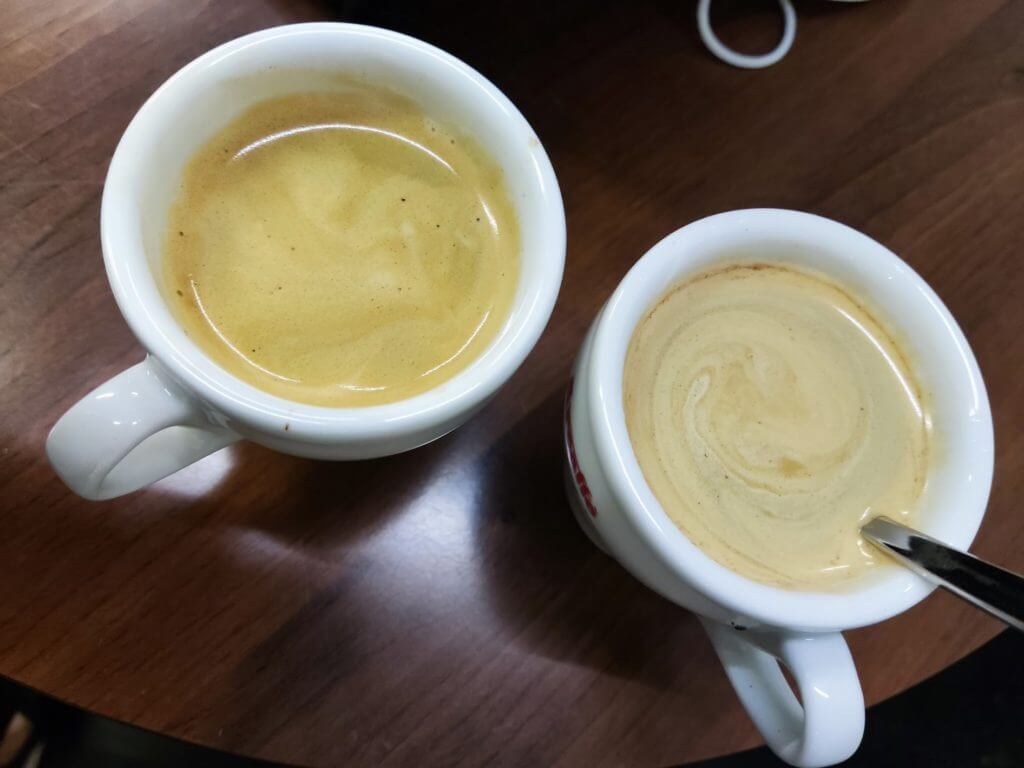
One question that our coffee specialists always get asked is, “Is there a way to improve Kopi?
Or visitors who came to our experimental room questioned, “How to make a Kopi with an espresso machine?”
When you have a coffee specialist and someone from Singapore, we had the same questions and had done the research before.
This information below is found nowhere, introducing Kopi Crema!
What is Kopi?
Kopi is the Malay translation of Coffee.
In Singapore and Malaysia, Kopi has a huge number of variations. If you are a foreigner new to Singapore, it may take you some time to understand fully.
The base of Kopi is filtered coffee. Similar to a french press or pour-over. Except they are filtered in cloth-like filters that resemble a sock. After getting the base coffee, the coffee is mixed to make various Kopi drinks.
Kopi is filtered black coffee mixed with hot water, sugar, and condensed or evaporated milk.
Both condensed and evaporated milk are sold in tin cans. The main difference is condensed milk is sweetened.
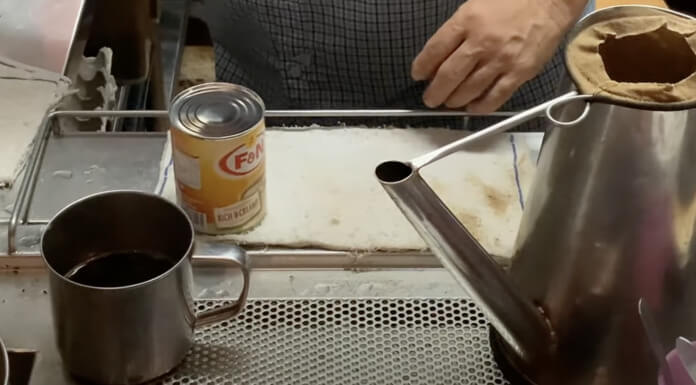
How to order Kopi?
Kopi has many variations encoded in Malay and various Chinese dialects, so it might be incredibly difficult for most foreigners to literally understand from the words. The names are also applied with equations for customisations. Even for locals, we may sometimes pause to understand what we are trying to order before we figure out what to tell the barista.
Kopi – Filtered coffee + hot water + condensed milk + sugar.
This is the de facto original and is what you get if you tell the barista with just the single description “Kopi”.
You can call it the “classic”, but most people who ordered this likely have not understood the modifications that can be done to match the taste to their palate. This classic can be very sweet as both the condensed milk and sugar are sweet.
Kopi C – Filtered coffee + hot water + evaporated milk + sugar
This drink is less sweet. It tastes closer to what you get in Hong Kong.
The pronounced C came from the Chinese word 细(Xi), pronounced more like “See” or just “C” in the Hokkien dialect, which means thin.
By general consensus, this is the healthier version with less sweetness.
Kopi O – Filter coffee + hot water + sugar
The pronounced O came from the Chinese word 乌(Wu), pronounced at Orh in the Hokkien dialect. It means black.
By default, the filtered coffee base is diluted with hot water before further mixing.
Gao – Thicker
This word came from the Chinese word 厚(Hou), pronounced in the Hokkien/Teochew dialect. It means thick.
This increases the proportion of the coffee base used with less dilution. Expect it to be thicker and more bitter.
Po – Thinner
This word came from the Chinese word 薄(Bo), pronounced in the Hokkien/Teochew dialect. It means thin.
This reduces the proportion of coffee base used, which makes it less bitter and thinner. The younger crowd may appreciate this better,
Di Lo – Full concentration of thickness
These came from the Chinese words 直下(Zhi Xia), pronounced in the Hokkien/Teochew dialect. It means pour all the way.
This means that the coffee base is not mixed with any hot water for dilution and is at full concentration.
Siew Dai – Less sugar
These words came from the Chinese words 少底, pronounced in Cantonese.
底(Dai) means the lower layer, The actual pronunciation should be Dhai.
少(Siew) means less. So it literally means a thinner lower layer of sugar, less sweet.
Gah Dai – More sugar
These words came from the Chinese words 加底, pronounced in Cantonese.
底(Dai) means the lower layer.
加(Gah) means increase. So taken together, it means increasing the bottom layer of sugar.
Kosong – No sugar
This is a Malay word which means zero. When you say kosong, it’s understood that your are referring to sugar.
Coke probably got their inspiration here.
By default, it is always hot. You will have to specify if you want lukewarm or iced.
Bing – Iced
It came from the Chinese mandarin word 冰, which means ice.
Pua Sio – Lukewarm
Came from the Chinese word 半烧 (Ban Shao), pronounced in the Hokkien/Teochew dialect
半(Pua) means half.
烧(Sio) means hot.
What they do is they mix with some room temperature water to cool it a bit
That’s not all.
You need to read in a specific format using the correct sequence:
Here’s the complete formula
Variation + Coffee thickness modification + Sugar Modification + Temperature modification
Taken together.
Kopi O Gao Kosong Bing = Black filtered, stronger concentration with no sugar, iced.
Kopi C Siew Dai = Hot filtered coffee with evaporated milk and less sugar.
Kopi Gao Gah Dai, = Hot filtered coffee with more coffee concentration + condensed milk and increased sugar.
Why is the barista making Kopi always look so tense
If you think about it, there are around 50 variations of Kopi and another 50 more from Teh, which is tea.
It is not as easy and clear cut as saying, “I want a Latte, I want a cappuccino”.
The barista has to listen very clearly to your order, followed by breaking down the equation and encryption to know precisely what you want before he can make the correct coffee.
Then the barista has to recall and reuse the equation you have given and formulate how much money to charge and how much change to return.
Not only that, there are other things to factor in their thoughts, like what sort of bread and eggs people may add to the same order.
Is it a takeaway order or not, which can increase the equation of how much money to charge.
It’s it’s a takeaway order, they will often ask if you want to put the drink in a cup or a plastic bag, with the latter costing more.
How do you define making a Kopi to taste better?
[su_icon_text icon=”icon: exclamation” icon_color=”#ff6956″ icon_size=”99″]For the “Kopi” we refer to below refers to the base coffee Kopi O Kosong. Which literally means Coffee Black without any sugar or milk. This is the usual coffee base used to make the different variations.[/su_icon_text]Kopi is a traditional drink and should not be changed too much from its typical character. Kopi, it’s designed from the start to be slightly more intense with almost no acidity.
But for Kopi connoisseurs, you may observe that some stalls taste smoother, some intense, some have a weird odour, and many are simply inconsistent. You will be lucky that the same stall can maintain the same quality 80% of the time.
What are the criteria of a good Kopi?
There are three main variables in the Kopi, just like any coffee drink.
Body
Which is how the texture is felt in the mouth.
This is closely related to how much oil is extracted, which depends on the coffee and how fine you grind your coffee beans.
The richer the body, of course, the better.
Flavour
Which is the aromatic fragrance that is felt while drinking.
Astringent
They are bitter and nasty notes. How to keep them at a minimum to not overwhelm the pleasure of enjoying the flavours.
Why does Kopi often taste so inconsistent?
When we say inconsistent, we mainly refer to the varying intensity of flavour and amount of astringents.
A good Kopi, is not as straightforward as making an espresso. They are not armed with advanced coffee machines that improve workflow.
Many coffee-making factors can be controlled but can increase labour, difficulty and cost.
Below are some of the variables that can go wrong, any one that is tilted off balance will change the taste. As you can probably learn as you read through, some things are not easy to control and making a good cup of kopi is not an easy feat.
Reuse of the sock filter
The sock filter is constantly reused. Nobody dumps them after each use.
Most vendors clean with detergent or water after a day, but the coffee oil and remnants may still stick.
They probably rinse with hot water during operation hours, which is insufficient. If reused and not washed enough, the coffee oil that sticks to the cloth filter would bring out unpleasant notes and astringents that overwhelm the excellent profiles.
The better vendors will not reuse the same sock too many times. They will dump their used filters into a pail to properly wash later. Or replace the socks with new ones regularly.
Using something like the Brew tabs is the correct detergent to clean the filters. The Pulycaff Grouphead detergent, which we use for espresso machines, also works. They are precisely for coffee and are food grade.
Contaminated sock filter
Have you ever tasted coffee that tastes so weird? Taste like how it smells from the mop?
That’s likely because the sock was washed with only water and did not dry well. The bacteria or mould nest on it and make that distinctive odour.
Reuse of coffee
Often you see the hawker add more hot water and reuse the same batch of coffee. Caffeine and the soluble compound on the surface of the coffee are easily washed away. So most of the pleasant notes are only available in the first extraction. Coffee should never be reused.
Did not use a coffee grinder
Once in powdered form, coffee takes only four days to oxidise to a condition that takes whole beans to oxidise in forty days.
As the coffee oxidises, you lose the oil, texture, and aroma. What’s left are mainly astringents.
Any good coffee in any recipe should always grind their coffee fresh. This is the clearest telltale sign that the coffee served is good. You always see if the seller has a grinder. Like we always said, having any grinder is better than no grinder.
Here we have an article to relate more on Buying coffee in whole bean or in ground powder?
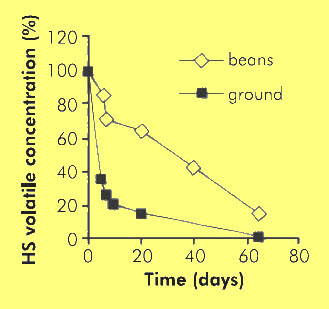
Temperature is wrong
You don’t use boiling water to make coffee. You use temperatures around 85°C to 95°C. Higher temperatures will increase the intensity and astringent and burn off the aromatic profiles. This issue is so prevalent that many Kopi drinkers are unaware that the same coffee they have been having could express so much more flavours when used in a professional espresso machine using the right temperature.
How to spot a good Kopi barista?
Spot the following.
- Do they have a grinder?
- Do they have a pail to collect a lot of used filter socks or wash them frequently?
- Does the barista avoid using boiling water? They should use water at around 85 to 95 degrees Celcius.
If you are an aspiring Kopi stall owner and looking at this article, i suggest the first upgrade is to get a good coffee grinder that is very reliable, like the Bezzera BB005 or Quamar Q13E.
Is the coffee used for Kopi different?
Here we have an article on What is the difference between coffee bean vs roasted espresso bean?
In most parts of the world, people tend to use a darker roast. The darker the roast, the more oily and bitter but less sour the coffee gets. Though lighter or medium roast coffee contains more favourable aromatic profiles, they have lesser body and intensity.
Previously, Kopi was made with mainly Robusta coffee, with some mix of Liberica or Arabica beans. The lesser-known Liberica is closer to Robusta, and Arabica contains much more aromatic profiles than Robusta. People in South East Asia are used to making Kopi with Robusta Coffee because it’s a hardy plant that can grow without shade. They are very resilient to bugs and have higher caffeine content. As for Arabica, the coffee rust disease wiped out most of the crops in the early days in South East Asia, leaving the settlers with almost no choice.
As Robusta beans have higher astringents, people used to mix them with maize or roast them with sugar and margarine to improve the taste. Nowadays, it’s not necessary to add maize or any additives. You can get a very decent cup mixing pure Arabica and Robusta beans. Since Robusta can produce a thicker body and has this familiar intense profile, they are still used heavily and well accepted in present coffee.
Also, dark roast pure Arabica coffee beans won’t make much sense as the intense roasting would burn off most of the flavours, making it taste not far from a robusta-loaded blend. Good Italian coffee like the Arcaffe Margo are lighter roast, so despite having Robusta in it, it tastes almost like a pure Arabica blend while enjoying all the goodness of the thick body Robusta could produce. Lastly, Robusta beans do have grading as much as Arabicas. Good Robusta beans taste almost similar to average Arabica but could produce a lot thicker texture coffee. They are also far easier to extract with excellent stability. Plus, they usually last a little longer in the storage life.
So, in summary, you can use any coffee, preferably dark roast coffee, to make your Kopi. The roast level and the quality of the beans could still make a big difference in the result. It’s better to get certified coffee that costs only a little more but assures you that the product is good.
How is Kopi compared to French Press?
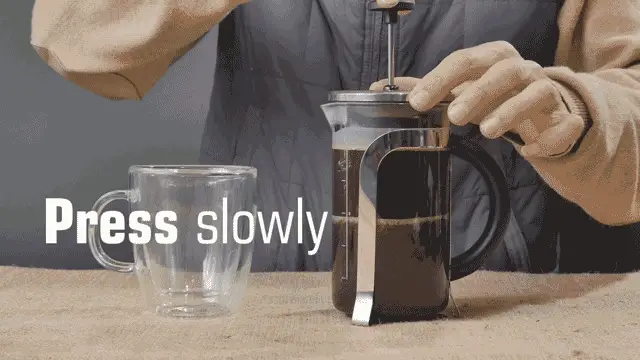
French Press is done with this apparatus with a wired filter that pushes most of the coffee down and locks most of the coffee remnants from entering the drink. Water passes through the mesh freely to infuse with the coffee.
What’s great about French Press is that you can expect your coffee to have a thicker body and taste richer, as the wired mesh does not absorb and remove the oil from the coffee. The oil contains many flavours and gives the drink additional texture.
As mentioned earlier, the cloth fabric filter used for Kopi can be repeatedly reused after cleaning and rinsing. If the filter was not sufficiently washed, the retained oil could go rancid or release astringents from repeated use.
What Kopi does better than French Press is the cloth filter can hold back almost all of the remnants, and hardly any coffee ground could go through. Giving you a cleaner cup free of coffee remnants.
Easier to clean than cloth filters
How is Kopi comparing Pour Over coffee like Chemex?
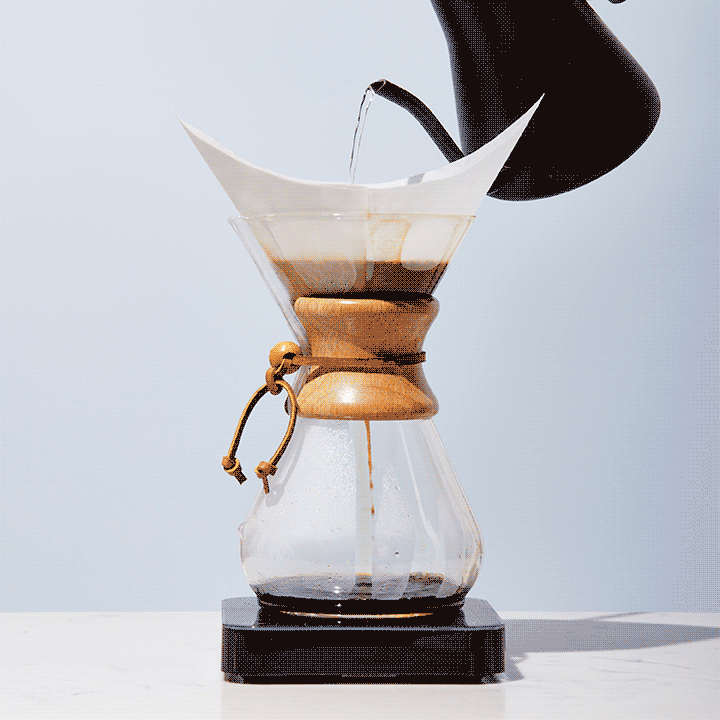
Pour over coffee use this apparatus with two chambers. In the top chamber, you put a filter, followed by the ground coffee. The user slowly pours hot water using a goose neck kettle on the coffee ground, and the concoction flows down to the lower chamber as coffee.
While making Kopi or French Press, hot water is directly added to the coffee for brewing, extracting at the same temperature.
For pour-over, the water is poured slowly with the goose neck kettle. The temperature of the water that falls on the coffee ground is lower as it cools when exposed to ambient temperature, and the more extended travelling from the longer sprout of the goose neck kettle.
The process may take a little more time and effort to complete. Still, this declining temperature extraction profile can reduce the bitterness and astringents that may overwhelm the pleasant profiles.
There are two types of filters, usually with the disposable paper filter or the stainless steel mesh filter. The paper filter will hold back the coffee oil even more than the cloth filter used in Kopi, as the paper filter is less permeable. This reduces the body and flavours in the coffee. Using the stainless steel mesh filter, you risk having a dirty coffee with more sediments, as seen in French Pressed coffee.
The mesh quality plays a significant role, but we have not found any metal mesh that significantly corrects the issues of reducing sediments in the coffee. You can reduce the sediments using a grinder with flat burrs, as they produce fewer small-size fines. The paper mesh can permit more oil to pass through, but we have yet to identify any known products that work.
A cleaner articulation of aromatic notes
Coffee is dirtier with more sediment. (With metal mesh filter)
Lesser body and flavour reduced from lesser aromatic oil permissible in the coffee. (With paper filter)
How is Kopi comparing Long Black or Americano?

Long Black and Americano are espresso-based, so you need a good espresso machine.
Have one or two espressos extracted directly onto a cup of hot water. It’s Long Black.
Have hot water poured into espressos, and it’s Americano.
They are similar, but a Long Black has a nice unbroken layer of crema settled on top as the coffee oil floats to the surface during extraction.
The good thing about this is that the espresso is usually very clean, so few remnants pass through. The temperature is also done at the right temperature if you have a capable espresso machine.
Suppose you use a double espresso, say 40ml, mixed with 140ml of hot water. A significant portion of the water that is used is pure water. Although most of the oil could pass through as espresso, much of the coffee remains unused, so the texture can be felt much weaker.
A cleaner articulation of aromatic notes
Easy to produce
Needs a proper espresso machine
What is the better way to make a better kopi?
Lets first decipher the recipe for coffee.
Usually, 16g of coffee for 200 ml of water.
That’s a 1 to 12.5 ratio.
As you can see, making Kopi differs from espresso, which has a much smaller ratio.
If you don’t have any espresso machines. The most practical way to have an optimised long coffee drink in our opinion, is to use the French press.
The flavours are all retained, and the body is decent. Do not use boiling water as it could burn off the delicate notes.
People may not like the amount of sediments that make the coffee “dirty”, but consuming them does more good than harm to your body.
There are other methods like using the Aeropress, which requires the user to push an espresso out with a plunger-like tool manually. This can work and won’t have the sediment issue, but it’s more work than using the French Press. The steps are a lot more, and each has a big impact to the result, so maintaining consistency is the biggest problem in this method. This can lead to coffee that varies in intensity and flavour in each extraction. I believe most people won’t enjoy doing this either.
Using Chemex or paper filters is what many cafes prefer to get a clean-tasting coffee, but it reduces the oil that can seep through, which heavily affects the taste and body. Like Aeropress, it requires a lot of work and maintaining consistency is an issue if the steps are too many.
If you have an espresso machine, that’s the best, as the variables are better controlled. You can do a Long Black, basically making two espressos on top of hot water.
You should also use a dark roast, preferably with Robusta. Arcaffe Margo or Arcaffe Gorgona are good choices. Our test with Margo was perfect.
We suggest using around 140ml of hot water with 2 Espressos, each 20ml to 25ml.
We generally prefer using 18g of coffee.
With this method, the created Long Black is similar to Kopi, except that it has much lesser bitterness and astringent. It can produce a sweet after taste that can linger for about an hour. The aromatic profiles are better articulated and is a lot smoother.
The caveat is it will lack the punch of intensity since it has little bitterness, which users may not be used to although it’s a good sign. You can alter this by increasing the duration of the espresso to make the ratio more if you prefer a higher intensity.
A cleaner articulation of aromatic notes
A good aftertaste
Takes more effort
Needs a capable espresso machine, preferably a heat exchanger or spring lever
Remember the ratio of Kopi is a 1:12.5
It should taste with a little more intensity with mild or no acidity. Flowery, fruity notes are not a part of the identify.
So what if you pull a long coffee straight?
In our experiment, our usual grind setting for espresso is 18g for a dark roast.
Instead of tuning and messing up the grind setting. We increase the flow rate by decreasing the resistance through reducing the weight. Using around 11g to 13g of coffee.
You still want to limit the extraction time, preferably within 40 seconds and fill up the entire 180 ml cup.
Still, the Arcaffe Margo or Arcaffe Gorgona are what we use for the experiments. Our test with Margo was excellent.
The extraction will flow quickly, as we espresso perfectionists identify as “under-extraction”.
The ratios are off and even higher than Kopi, as we have a 1:14 to 16 ratio.
Those faults no longer matter as we are not making an espresso-based drink. Our target is a better Kopi, not a better Long Black/Americano,
Furthermore, Kopi’s ratio is based on infusion, we are doing with pressure which should boost the intensity.
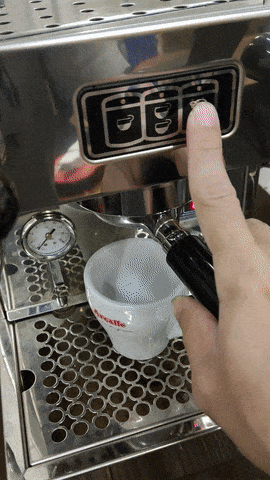
Using a single or double spout portafilter is better to reduce splattering.
What you get is long coffee, with every drip of water that passes through the coffee grounds, taking out all the soluble compounds from the surface of the coffee, good and bad. Expect a thick body and full-flavoured coffee. It has little or no sourness. It won’t be much more bitter, as there’s a vast volume of water to blunt the sharp edges. The flavours of the coffee are better articulated but less than a long black as it’s overwhelmed with more astringents. You will eliminate most of the flowery, fruity flavour not part of a Kopi identity.
The most beautiful part? It’s easy to produce, and you can tune the intensity.
For our example, choosing between 11g or 12g changes the result significantly.
The coffee may leave a pleasant after-taste that persists for half an hour if the coffee is decent.
Our try with the Arcaffe Margo has left a sweet honey note as if your mouth was sprayed with perfume.
Very mild astringent and bitterness.
A widespread articulation of aromatic notes
A very thick body
Intensity can be adjusted
Easy to produce
Needs a capable espresso machine, preferably a heat exchanger or spring lever
The intensity is a tricky equation, as we described earlier. Some prefer it smooth. Some like it intense.
Not a significant issue since we can easily tune the intensity with Method 2 or 3.
In the photo below, they are done using method 3 with 11g and 12g. Look at the world of difference. The one with the 12g does look better and tastes very similar to the usual Kopi, except with more flavours and fewer astringents. The one done with 11g tastes much smoother, and you don’t mind drinking many, similar to Kopi O Po Kosong.

For method 3, adding more coffee can improve the body and have more volatile compounds and flavours. You can use up to 20g of coffee
But when you add a lot of coffee in, the flow rate will be slower due to having too much resistance, and you won’t be able to complete the extraction in 30 to 40 seconds. You will have no choice but to adjust the grind setting on your grinder to increase the coarseness of your coffee.
With the stars and everything well aligned, you can expect it to be the best Kopi possible.
A heat exchanger like the Bezzera BZ10 or a spring piston like the Bezzera Aria works best. The science behind it is you will need a declining pressure or temperature profile.
The longer or more you extract, the higher the probability of astringent pulling out.
So towards the end of the extraction, we want to add volume, which should be done carefully with lower energy. Most coffee machines sold in electro marts perform the opposite, increasing the temperature profile that will reduce the flavours and increase astringents.
Is there a name of this improved Kopi?
I think there’s no official name for it. We call it the Bay’s Kopi Crema, named after our coffee specialist who did the research and had it introduced many years ago. Plus, this is a Kopi with a nice layer of crema. You can use the Bay’s Kopi Crema as the filtered coffee base to make the different variations of Kopi, as mentioned earlier in the article.
On the other hand, there’s a similar drink called Caffe Crema. A speciality coffee from Switzerland and Northern Italy.
WANT TO KNOW MORE?
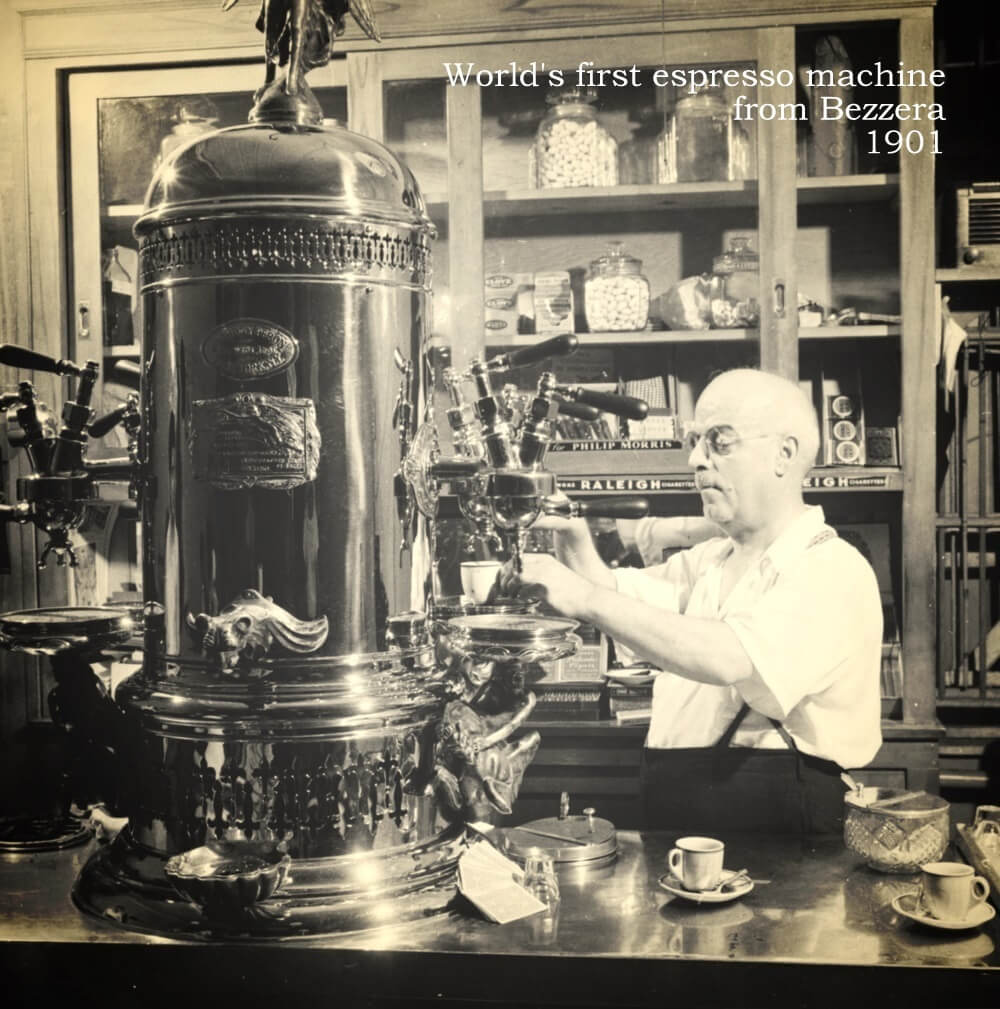
Looking for the best coffee machines?
Check out these coffee machines from the longest-standing espresso machine company in Italy.
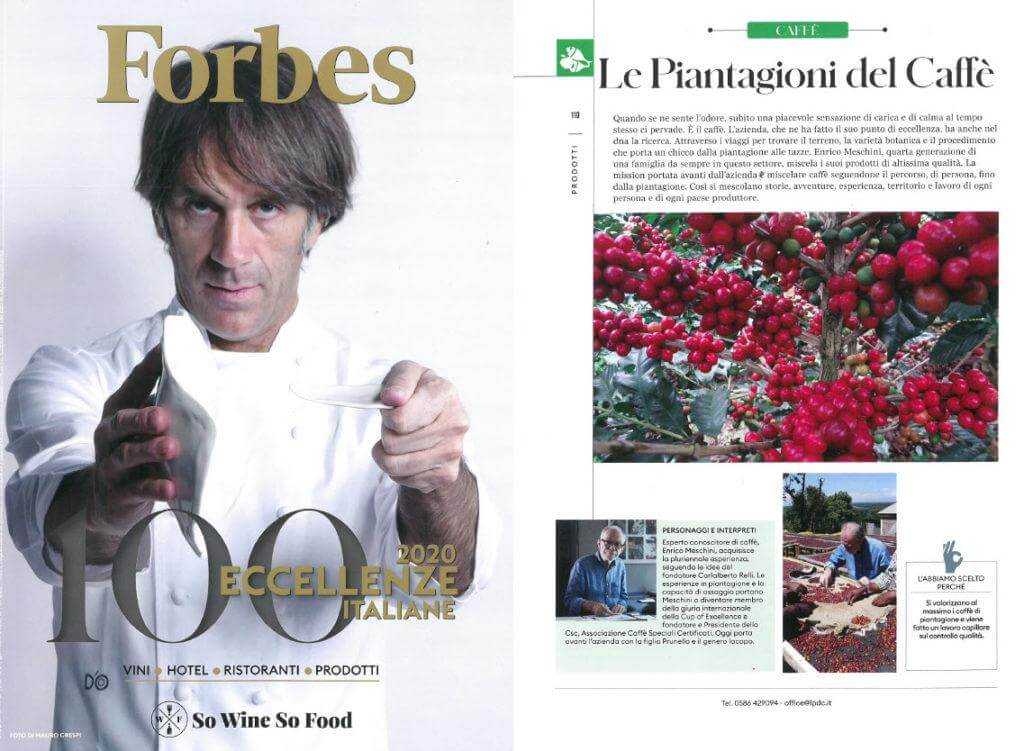
Who has Forbes rated as the best coffee from Italy?
Only one clear winner from a legend. Who is also the international Judge for the Cup of Excellence event, known commonly as the Oscars of Coffee.
Like to try the machines?